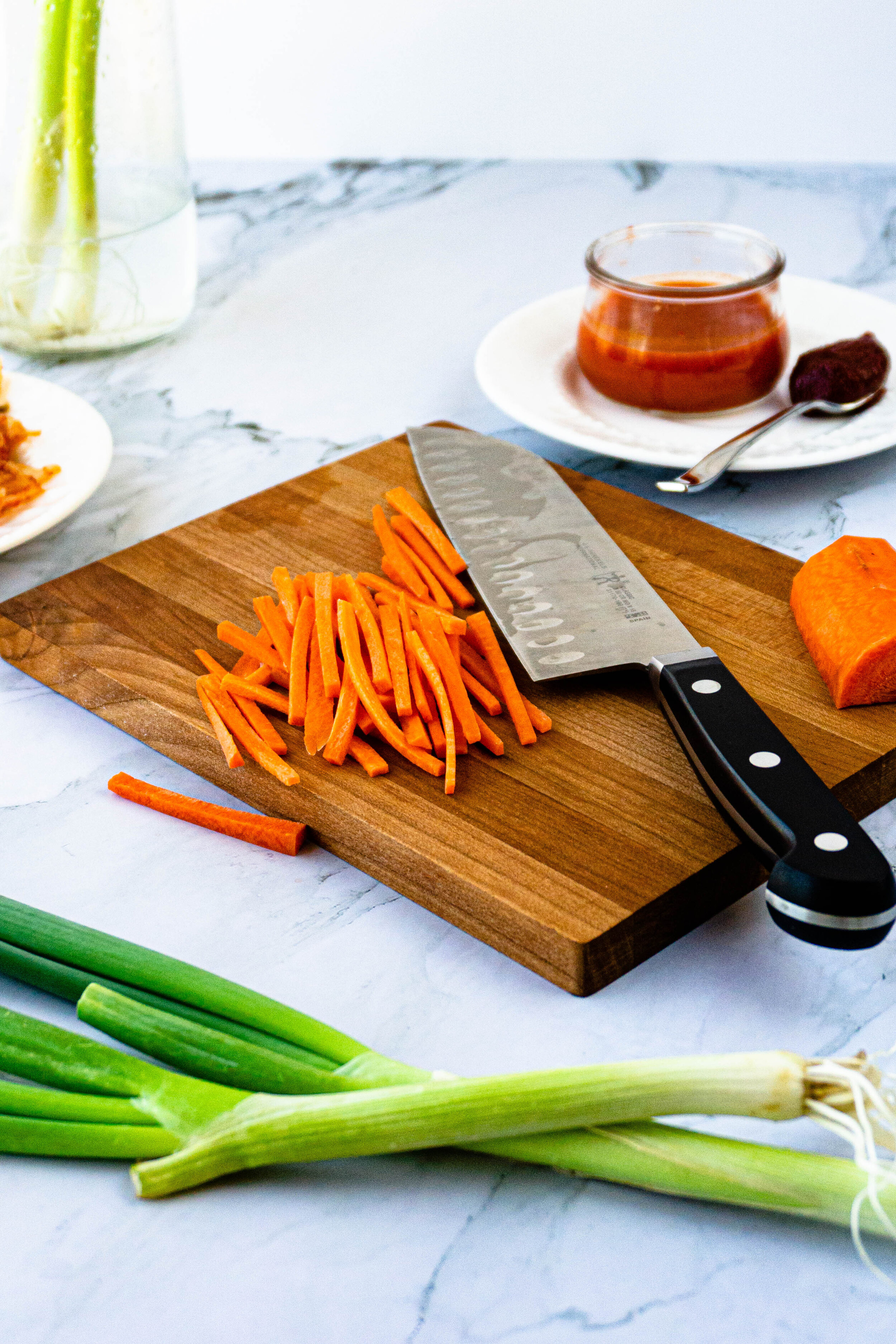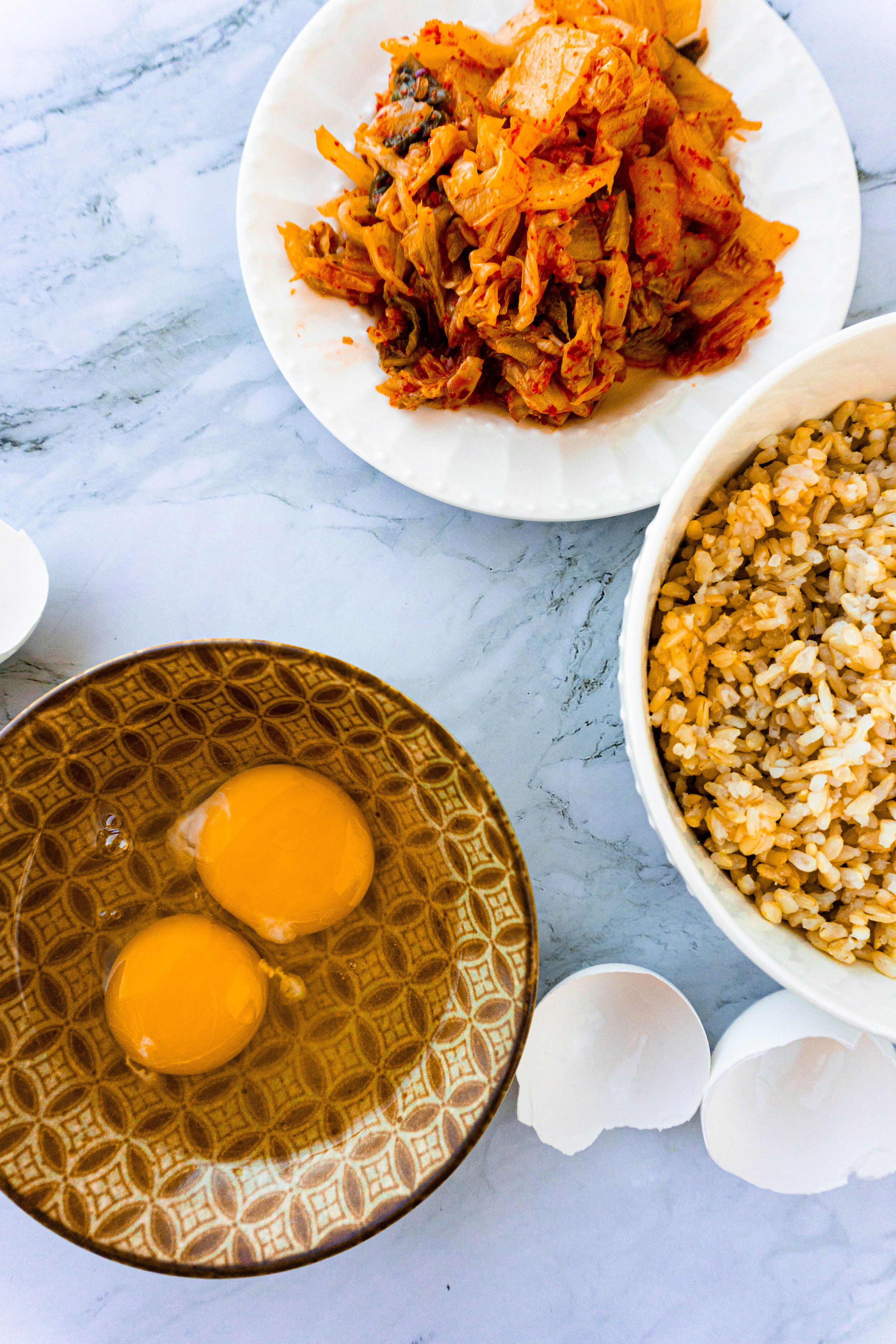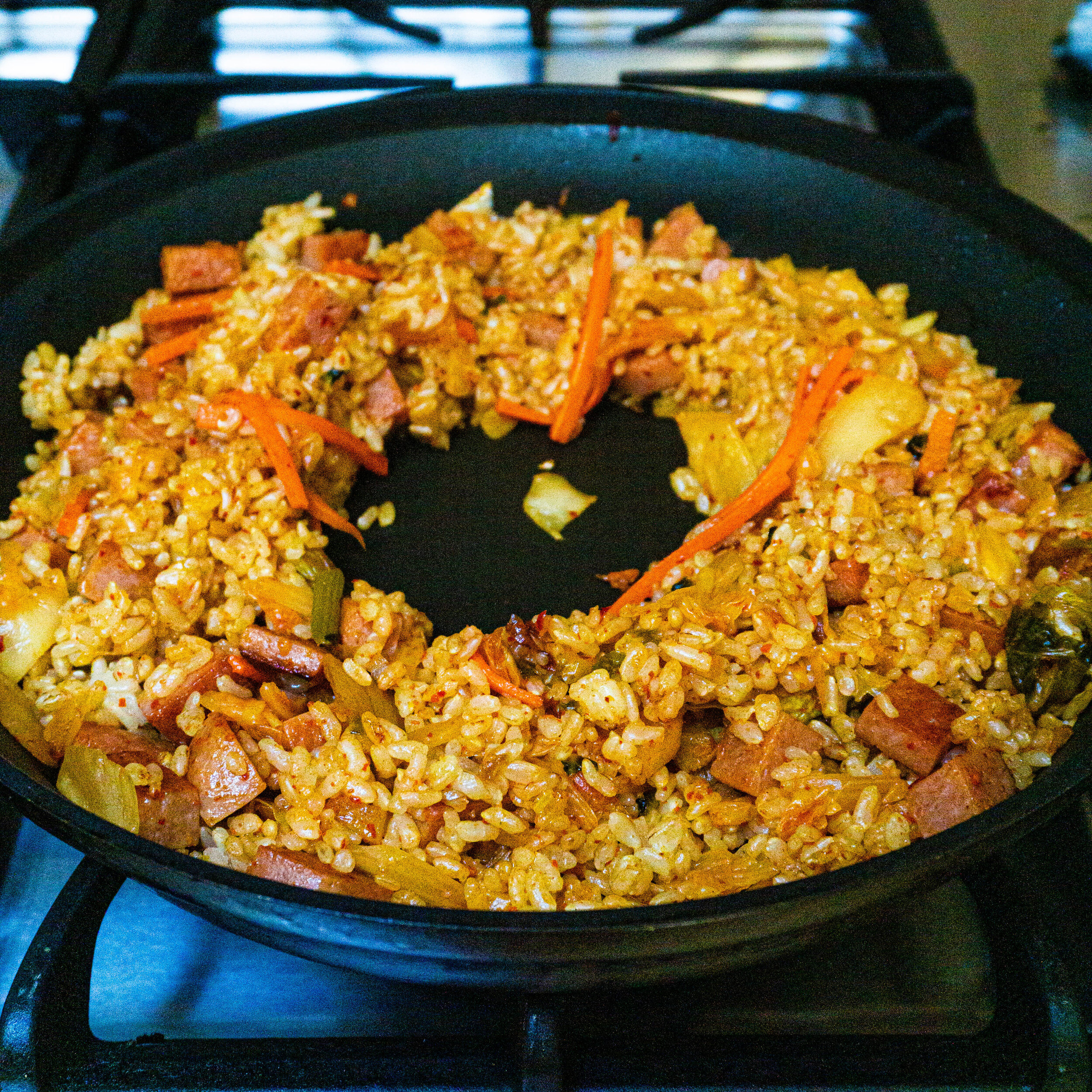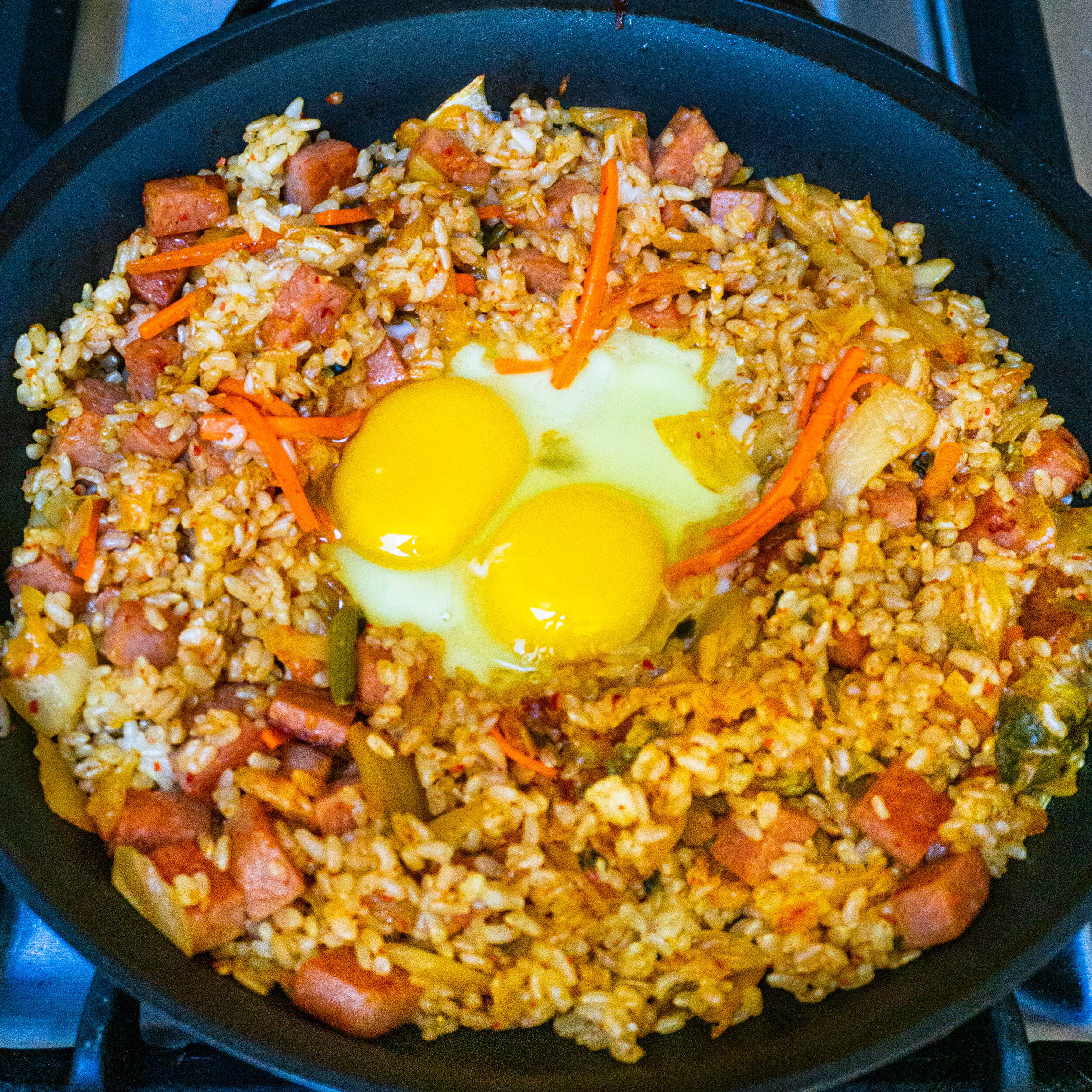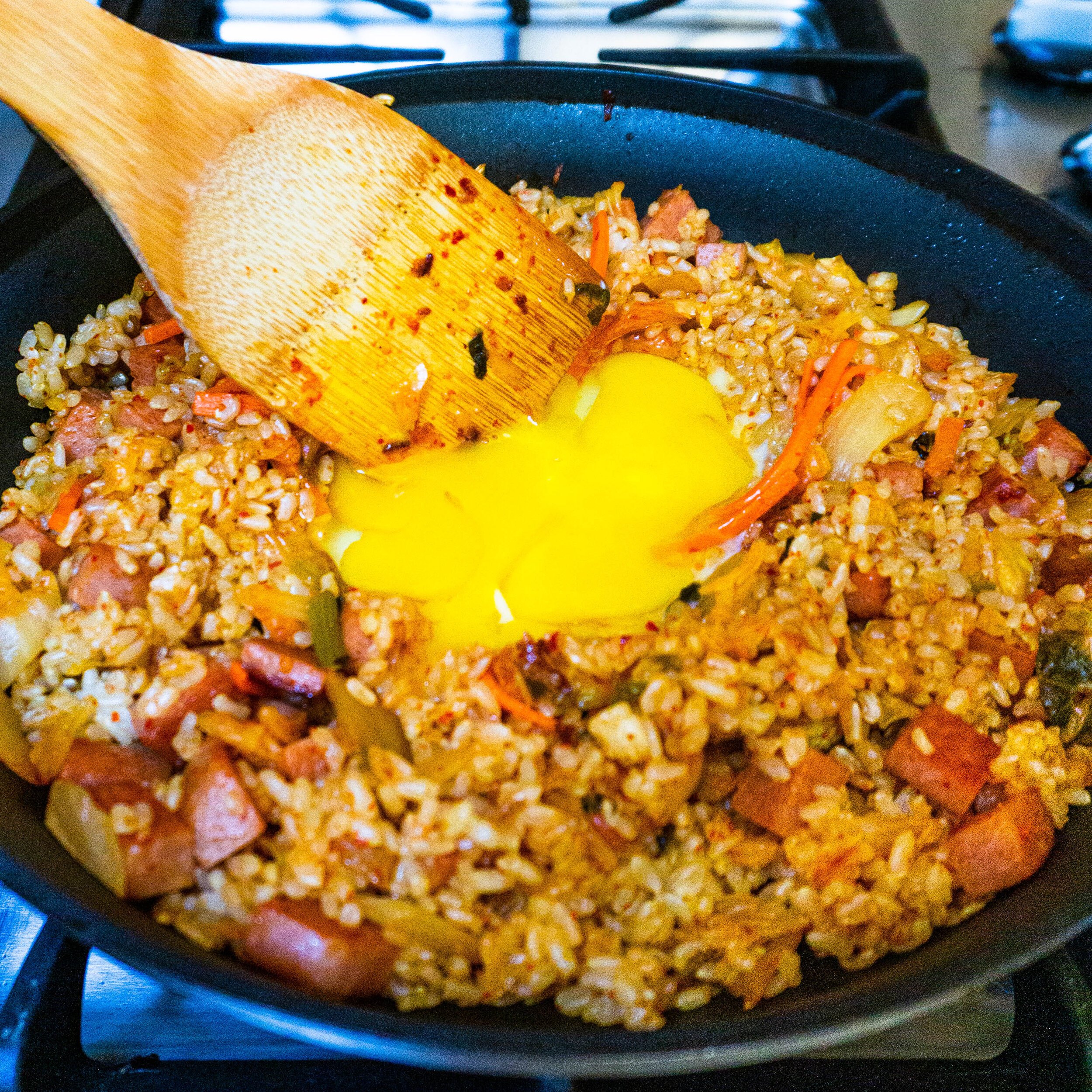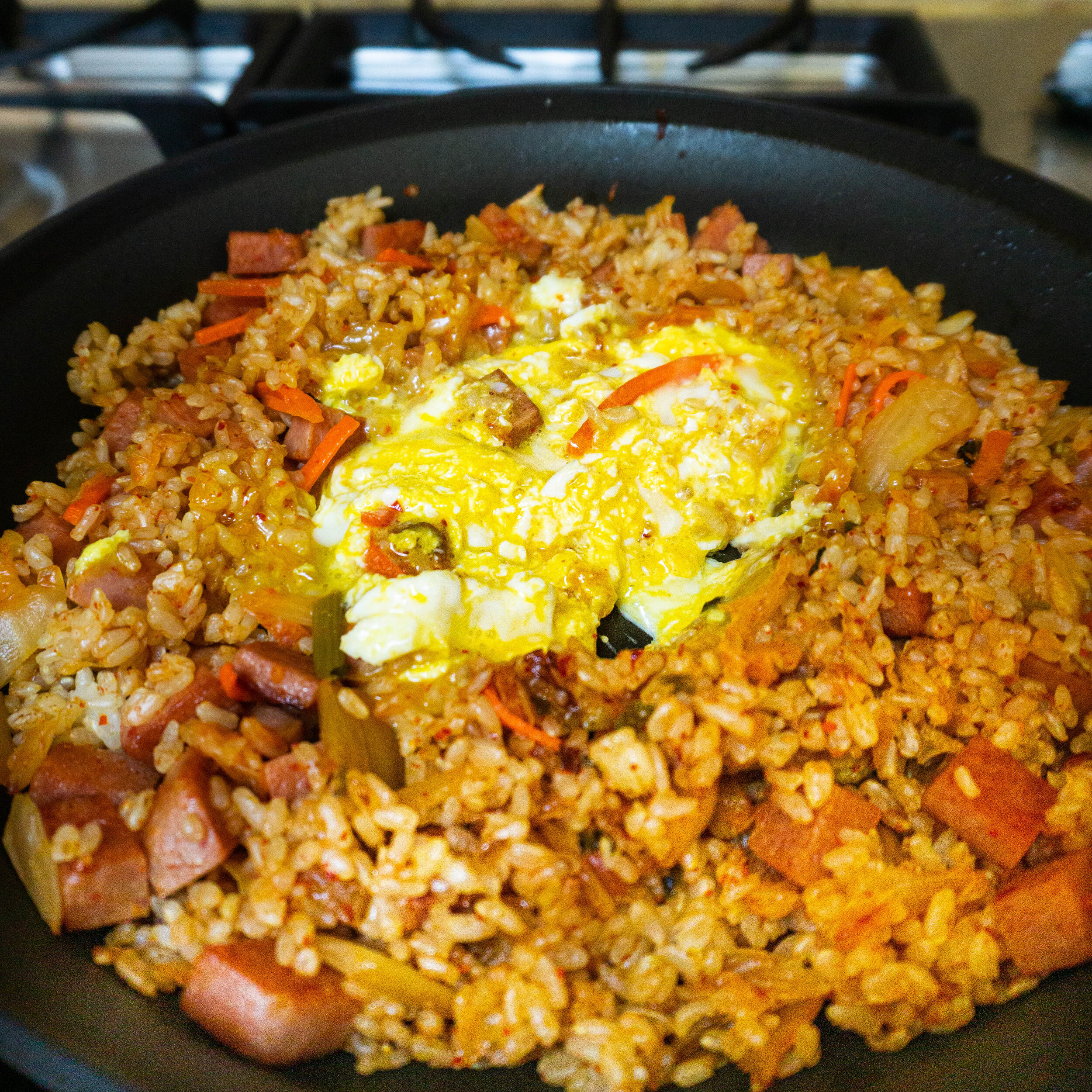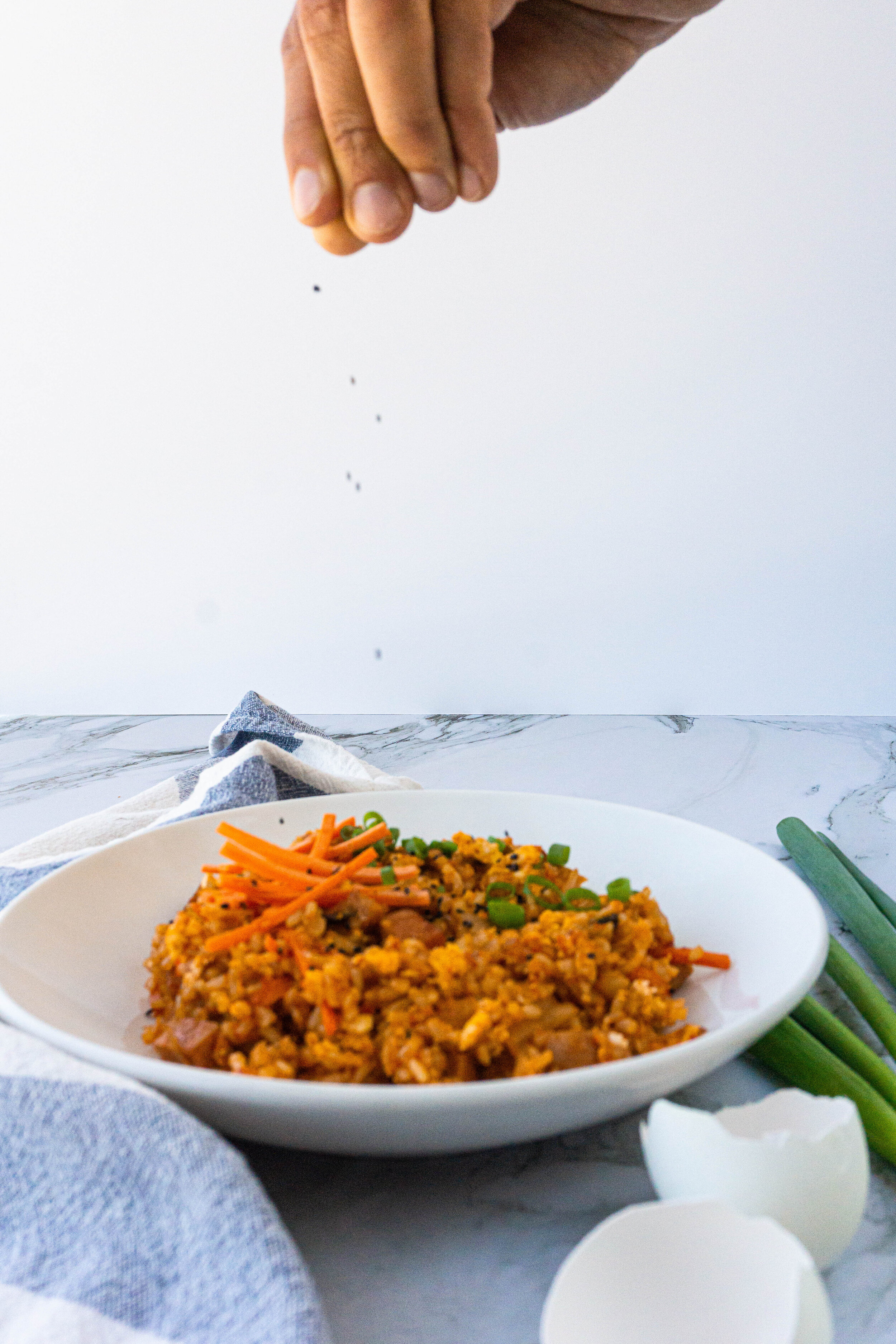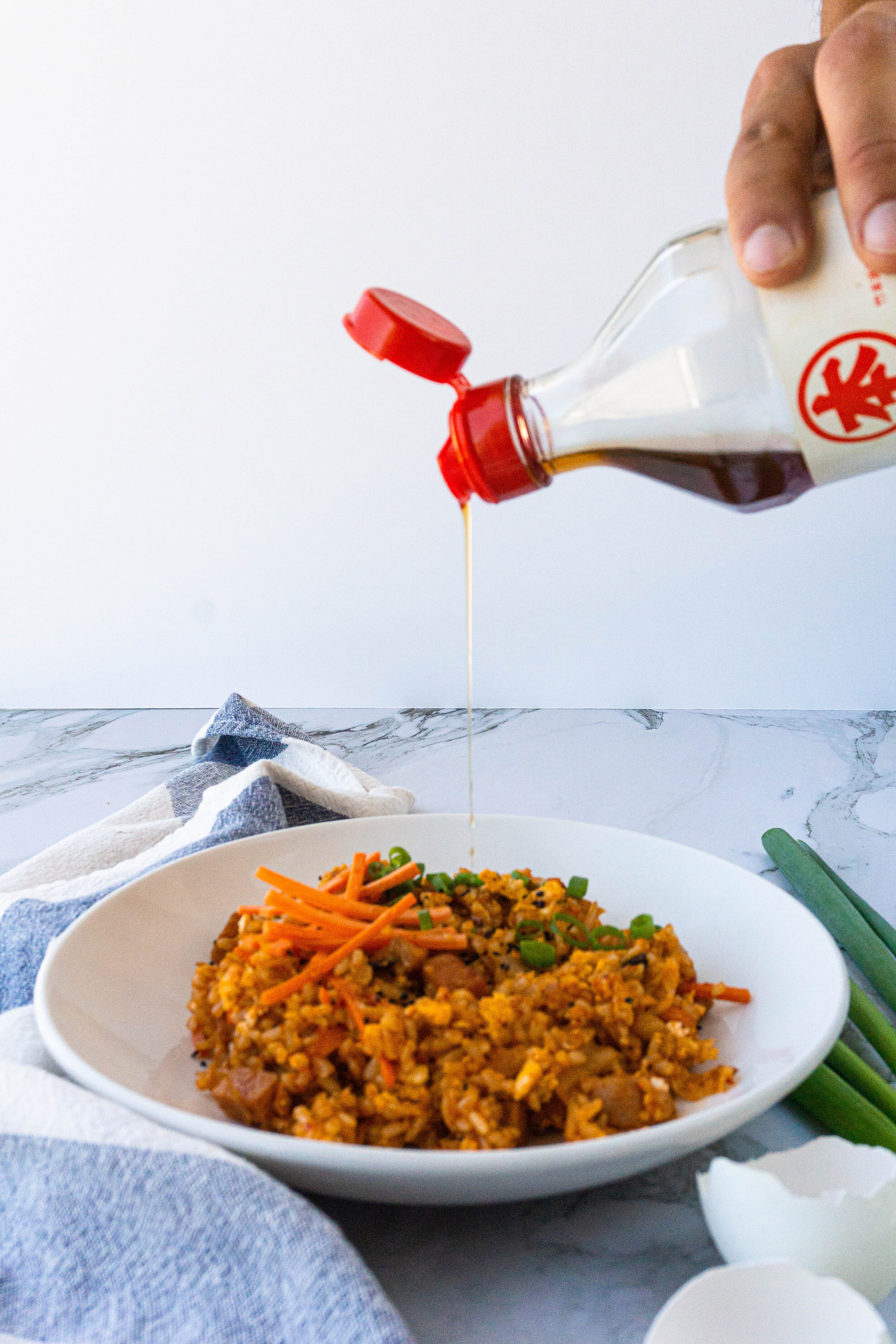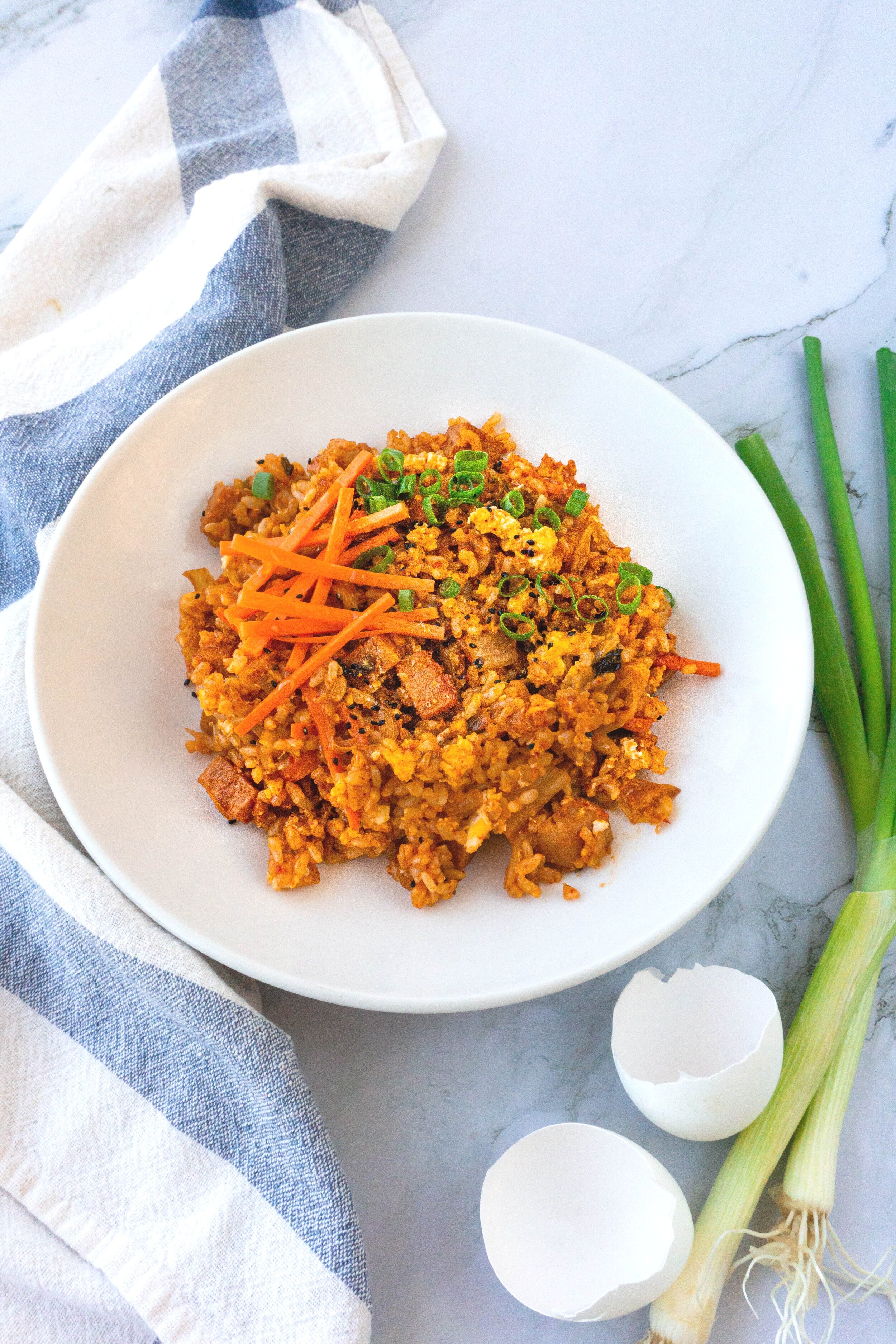Kimchi Fried Rice
Fried rice is a staple in Asian cuisine — each country has its own version: Bokkeumbap (Korean), Chow Fan (Chinese), Yakimeshi (Japanese), Khao Pad Goong (Thai). Its simplicity and versatility are at the heart of fried rice’s proliferation.
What I love about fried rice is that you can add ANYTHING you want. It’s the ultimate refrigerator-clean-up dish. As long as you have some leftover rice, you can make fried rice. Eggs are optional, but a welcomed addition. Same goes for meat and veggies.
Early on during Covid, with fears of supermarket closures, I STOCKED UP — borderline hoarding. And like many, I went big on shelf stable foods. So now I have an absurd amount of fermented foods including kimchi and gochujang.
So, here’s my recipe for the spicy, funky, salty, kimchi fried rice I’ve been turning to time and time again during coronavirus. I hope it will sustain you in your ravenous hours of need.
The Recipe
Makes about 4 cups (2 hearty servings)
Ingredients (🎩Rule of Thumbs)
Fried Rice
2 tablespoons neutral high smoke-point oil (🔥On Oils)
2 teaspoons Sesame oil, plus more for drizzling
¼ cup of liquid from the kimchi jar
1 ½ cups of Kimchi, chopped into bite-size pieces
2 cups of leftover cooked rice (🔥Against the Grain)
2 eggs
Optional additions
½ - 1 cup of meat, cut into bite-sized pieces (🎩 Chef’s Choice)
⅓ - ½ cup additional veggies for filling or topping (🎩Crunchy / Soft)
1 teaspoon - 1 tablespoon Gochujang (depending on your spicy tolerance)
Sliced scallions for topping
Pinch of sesame seeds for topping
Instructions
Prepare spicy sauce:
Heat a tablespoon of neutral oil in a large non-stick skillet or well-seasoned wok over high heat (🎩Material Matters). Let the oil get hot for 1 minute
While the oil is getting hot, combine the kimchi liquid and sesame oil in a small bowl. If you are using gochujang, dissolve it as best you can into the kimchi liquid.
Cook the meat (Optional):
Lay the meat in the pan in a single layer, searing one side undisturbed until browned. About 1-2 minutes. Using a wooden spoon or rubber spatula, move the meat around the pan to quickly sauté the outside until it no longer looks raw. (🔥High and Dry) For fattier meats, it’s OK if the interior of the meat is still a little raw, we’re going to continue cooking it with the other ingredients.
Cook the veggies:
(🎩Crunchy / Soft) To the pan of meat, add the kimchi plus any additional veggies you would like cooked into the fired rice. Sauté the kimchi, veggies and meat, moving the contents around the pan every 15-20 seconds to prevent from burning. Cook for about 2-3 minutes. We are looking for the kimchi to heat up and any additional veggies to begin to soften or wilt. Also, we are looking for the meat to be mostly cooked through at this stage.
Add the rice:
To the pan of meat and veggies, add the rice then stir to combine the ingredients. (🎩Against the Grain) Once all your rice is loose, flatten all the ingredients in the pan to maximize the surface contact of your fried rice to the pan. Allow the fried rice to sit for 1 minute undisturbed, allowing it to absorb the heat and begin to crisp on the bottom. Then stir everything to prevent from burning. Repeat the flattening and stirring several times, cooking the fried rice for about 5 minutes. (🔥High and Dry).
Add the eggs:
At this point you can choose to either mix the eggs into the rice, similar to a Chinese-style fried rice, as pictured above. Or, you can opt for the more traditional Korean style, serving the fried rice with a fried egg on top.
For mixed-in: Turn the heat down to medium-high. Push the fried rice to the outer edges of the pan, making a donut shape with a hole in the middle. Pour a splash of oil into the hole, about 1 tsp. Now add the whole eggs directly into the hole in the middle. Let the eggs cook undisturbed for 1 minute. While the eggs cook, pour the kimchi liquid mixture over the rice around the pan, avoiding the eggs in the center. After the minute is up, stir the eggs to lightly break up the yolks inside the well, then let them cook giving the eggs a stir every 10-15 seconds. When the eggs are 80% cooked, incorporate the egg into the rice. Stir in any of your last-minute veggies and let everything cook for 1 final minute (🎩Crunchy / Soft). Portion the fried rice into bowls or plates.
For fried egg — Pour the kimchi liquid mixture over the rice. Add any last-minute crunchy veggies if you’re using them (🎩Crunchy / Soft). Mix everything together to combine thoroughly and cook for 1 final minute. Portion the fried rice into bowls or plates, emptying the pan. Turn the heat down to medium-high. Pour a teaspoon of oil into the pan and let the oil heat for a minute. Then crack an egg into the oil. Let the egg cook until your desired doneness. Transfer the egg to the top of the fried rice. Repeat with the final egg.
Finish and serve:
To serve, arrange any additional veggies for topping (🎩Crunchy / Soft). Drizzle lightly with sesame oil, top with sliced scallions and sesame seeds.
Enjoy!
Hot Tips 🔥
ON OILS — we’re going to be turning the heat on high so avoid using low smoke-point oil like EVOO or coconut oil. These oils may cause your fried rice to taste burnt. Instead, use high smoke-point oils like vegetable, grape seed, sunflower, safflower, or avocado oil.
AGAINST THE GRAIN — you can pretty much use whatever rice you have on hand, or a mix of rices if that’s your jam. Keep in mind that shorter grain rice, like Calrose, are higher in the starch that makes rice sticky. When rice is cold, the starches bond the grains together forming hard clumps. Heat relaxes the starches and gentle pressing will separate the grains. So be patient and don’t be afraid of leaving the rice on the heat! Long grain on the other hand, like jasmine and basmati, are lower in this sticky starch so they don’t clump up as much.
HIGH AND DRY — to prevent overcooking leaner cuts (chicken breast, pork chop, flank steak, etc), cook the meat fully then transfer the cooked meat to a side plate. Reserve the meat, adding it back before adding the egg.
Tricks 🎩
RULE OF THUMBS — fried rice is a flexible dish. If you find you have less leftover rice than the recipe calls for, that’s totally fine! Nobody complained that the fried rice had too much filling. Conversely, if you want more rice and less filling, things will turn out just fine. Use what you have and adjust the ratio as you see fit.
CHEF’S CHOICE — SPAM is my favorite (if you’re using it no need to pre-oil the pan). Otherwise, I tend to opt for chicken thighs since they hold up well to the heat. For leaner cuts, be careful of overheating (see 🔥High and Dry)
CRUNCHY / SOFT — Additional veggies like diced or julliened carrots, diced onions, sliced mushrooms, torn kale, bean sprouts, you name it, can be added to the fried rice to bulk the dish up or add texture as garnish. Keep in mind the longer the veggies are cooked, the softer they get. So if you want something to be very soft, add it early. If you want it softened but still have some crunch, add it late. And if you want it to stay crisp and fresh, add it as a garnish.
MATERIAL MATTERS — It’s important to use a non-stick pan or well seasoned wok; I would not use a regular unslicked pan. As food cooks in a regular pan it sticks to the cooking surface. If given enough time to cook undisturbed, the food will develop a crust that can naturally release from the pan. However, this recipe requires you to move the food around too frequently for an adequate crust to develop, resulting in a hot mess that you will have to soak and scrub to remove. So do yourself a solid and just use a non-stick or well seasoned wok instead.


